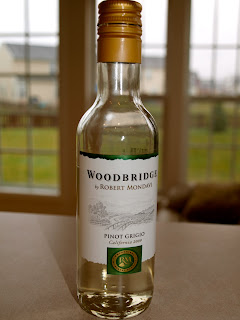Spinach Nuggets
1/4 cup sliced almonds*
2 large handfuls fresh baby spinach
1 1/2 cups whole wheat breadcrumbs, divided
2 eggs
1/4 cup flaxseed meal**
1 teaspoon basil
1 teaspoon oregano
1/4 cup shredded cheese (I used cheddar, but any kind will be fine)
*If you haven't introduced nuts to your toddler yet, try to substitute extra bread crumbs. I started introducing nuts at age 1 with Meghan and haven't had any issues.
**If you don't have flaxseed meal on hand, you can use extra breadcrumbs here as well. Flaxseeds are nutritional powerhouses, though, so I highly recommend you keep flaxseed meal on hand. It's easy to sprinkle in to most any recipe or snack. I currently use Bob's Red Mill brand.
Step 1
Preheat the oven to 350 degrees. Spray a cookie sheet with non-stick cooking spray and set aside.
Place the almonds in the food processor and process until they turn into a fine crumb.
Step 2
Add the two handfuls of spinach and pulse until you have a green crumb-like mixture. Set aside.
Step 3
Whisk the two eggs in a small bowl.
Step 4
Add the spinach-almond mixture, 1/2 cup of breadcrumbs, the flaxseed, basil, oregano, and cheese and mix until evenly incorporated.
Step 5
Place the remaining cup of breadcrumbs in a small bowl. Using your hands, form a small portion of the spinach mixture into a ball and roll it in the breadcrumbs until it is fully covered.
Put it on the cookie sheet and press it down to form a nugget shape. Repeat with remaining spinach mixture and breadcrumbs. You should end up with 15-20 small nuggets.
Step 6
Bake for 25 minutes, turning the nuggets over halfway through the cooking time. Allow to cool and serve.
Yogurt-Thyme Dipping Sauce
1/4 cup yogurt*
1/8 cup tahini (sesame paste)
juice from 1/2 lemon
1/2 avocado
1 tsp. dried thyme
Place all ingredients in blender and blend until smooth.
*I used full-fat yogurt as fat is extremely important for the developing brains of babies under 2. If you have an older child, you may want to use low-fat or non-fat yogurt.
Here is Meghan enjoying her nugget. Please excuse the crazy-baby hair. She was in a I-don't-want-to-keep-my-bow-in kind of mood. She ended up enjoying the dip a little too much and eating the rest of it with her hands. I didn't mind since the ingredients were healthy.
Later in the meal when she was having her peanut butter banana "sandwiches" (cut a banana length-wise, spread with peanut butter, put it back together, and slice), she decided to dip those as well. Gross, but whatevs.
Since there was a nice, big batch of nuggets, I froze them. I put two nuggets each into small plastic bags, and then put those inside a ziplock freezer bag. These will be simple to pull out and pop in the microwave for a quick veggie side or snack.





























